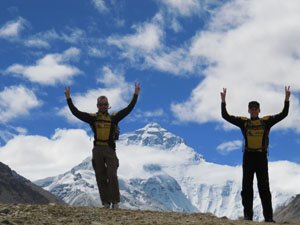1.Mount Everest Is 8,848 Meters High and Is Still Growing

Mount Everest is part of the Himalayan range, and it is the tallest peak at 8,844.43 meters (29,016 feet) high. And it's still growing at a height of about 40 centimeters (16 inches) per century.
2. The Climate Is Very Harsh: It's Capped with Snow and Ice All Year Round
From a height of 5,300 meters (17,400 feet), the mountain is capped with snow and ice all year round. People who want to climb the mountain must wear goggles as well as warm clothes in case of snow blindness.
The climate is very harsh. The warmest temperature there is -20°C (-4°F).
3. It Takes at Least 30,000 USD to Climb Mt. Everest
If you love mountaineering and plan to climb to Everest's summit, it's good to know that it costs at least 30,000 USD to climb the mountain. You will need to spend money on transportation, guides, training, and professional gear.
4. There Are More Than 7,000 Peaks on Everest

The first recorded person to reach the summit of Everest was in 1953. Since then, more than 4,000 different people have stood on the top of Everest over 7,000 times. Some of them (most are Sherpa guides) have climbed it more than once.
Comments
Post a Comment